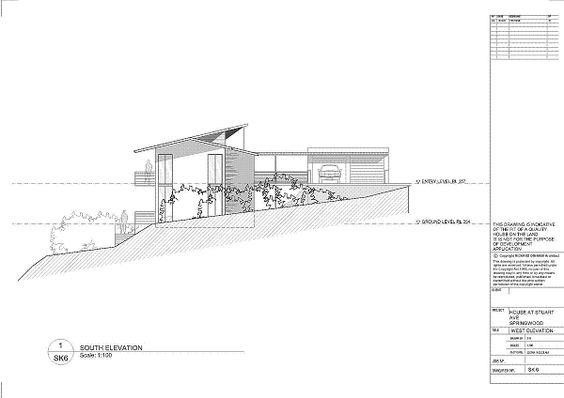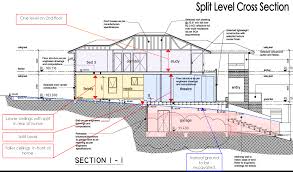The Slope

It’s no accident that some of the most spectacular homes in the world are built on slopes. Here’s why:
- Views: You can enjoy stunning views of green valleys or wooded forests below, clear sky views above, and uninterrupted lines of sight for miles in some cases.
- Landscaping: For many, the main appeal of having a home on an incline is the striking aesthetics it presents, which includes the opportunity for breathtaking landscaping.
- Space: Plots with steep slopes allow for the extra space of a basement that serves as another floor of the house.
- Privacy: For those who place a premium on privacy, building on a slope allows you to select a location far off the beaten path.
This website aims to give a little information for people who intend to build on a sloped piece of land. It only covers the issue in brief. For advice on building on a slope please contact us on info@theslope.co.za

Things to think about
When you are building a house on a slope it’s essential to take so many things into account. A sloping hillside can be a picturesque setting for your dream home, but the process of bringing that picture to life is more complicated than it would be for the average dwelling. Building a house on a sloped piece of land presents unique challenges that you need to be aware of, including additional costs and longer construction time.
Two main methods
There are two ways to build a house on a sloped plot – the “cut and fill” method, or making use of stilts.
Cut and fill refers to the process of levelling out the ground for the foundation by adding fill, or removing it, or both. Soil may be brought in to “fill” the plot and make it level, or it can be dug (“cut”) from the slope and either transported out or used to shore up retaining walls for the home. Depending on the gradient, soil conditions, and other factors, cutting and filling can make construction multiple times more expensive than that for a home on a flat site.
Using stilts, pilings or columns is an alternative to cutting into the slope. This can be a much more cost-effective method than cut and fill and can also open up the realm of possibilities for home placement, such as building out over trees or water.
The most important factor – the Slope
The biggest hurdles boil down to two main factors: the gradient of the slope and whether the plot is ‘upslope’ or ‘downslope’. You can get a rough idea of how challenging a particular site will be to build on by its gradient rating. Less than 10% incline is considered slight and is the easiest to build on, while 11-20% is considered moderate. Anything above 20% is deemed steep. Beyond about 15%, costs begin to increase significantly as the risks become greater and the work becomes more difficult. An upslope plot (where the front of the house rises up to the back) is also more challenging than a downslope plot. These types of plots usually require some amount of cutting or even blasting, plus transporting and disposing of rocks and soil.
Planning for Water
If you’ve ever seen footage of the effects of mudslides, you’ll understand why proper attention to drainage — for both surface and subsurface water — is absolutely crucial to building on a slope. Rainfall runoff has to be redirected away from your home’s foundation, without endangering any neighbouring properties with water flows and without flooding public roads. Retaining walls have to be “tanked” (waterproofed) and drained to prevent water from pooling there. Swales and culverts can usually be used to channel the runoff to stormwater drains or soakaways (holes dug in the ground and filled with rubble that allow surface water to percolate back into the ground).
If your home will have a full basement that will be located below the seasonal high water table, subsurface water leaking in can become an issue. Workarounds range from the elegant (French drains and/or crushed stone beneath the foundation) to the functional (a sump pump in the basement during rainy season).
Finally, sewage treatment can be tricky depending on where your home is relative to the sewage line. If the line is uphill, you may need to install a pump, and if it’s downhill, you may have to install tumble bays to slow the flow to a reasonable rate.
Access – during construction and beyond
Access to the property — for both you and your contractors — is an important factor to consider in your calculations, as well. Property that may seem like a steal initially could run up high costs for additional grading if there’s no good way to access it. Switchback and curved driveways are helpful and attractive, but small properties that don’t have room for them may have no choice but to install a steep driveway that can be hazardous in rainy weather.
Flat ground is of course easier to work with, but with the right planning, a sloped lot can be the canvas for landscaping that sets you apart from ordinary front yards. You’ll want to put down plants that can take root on an incline. Ground cover plants with deep roots such as English ivy and Euonymus vines can help reduce erosion and prevent weeds. For planting in retaining walls, Better Homes & Gardens recommends plants that grow well in crevices such as creeping phlox, thyme, and candytuft. They also suggest waterfalls, potted plants, and decorated switchbacks for sprucing up sloped yards.
Need more information? Contact us at info@theslope.co.za